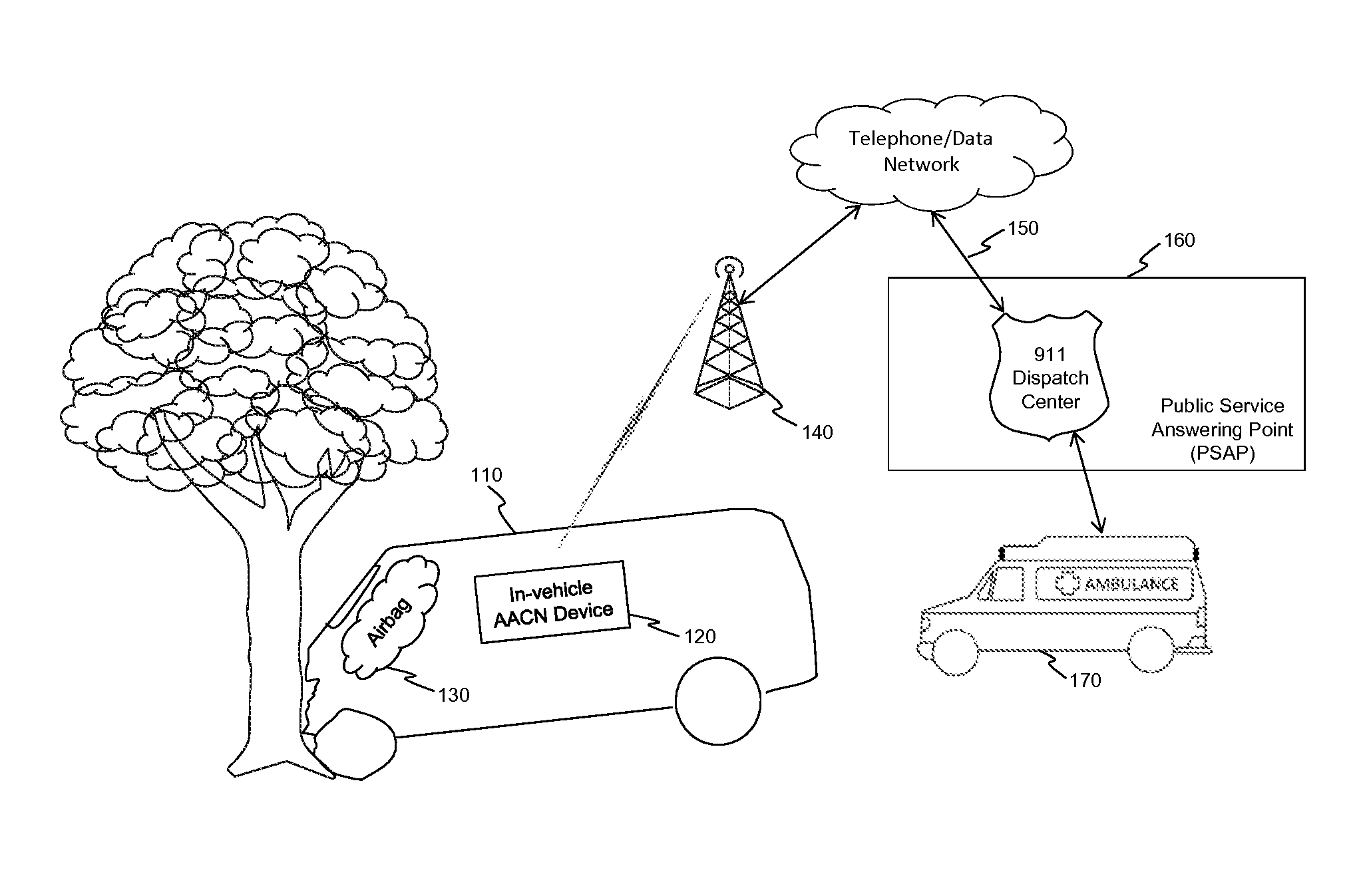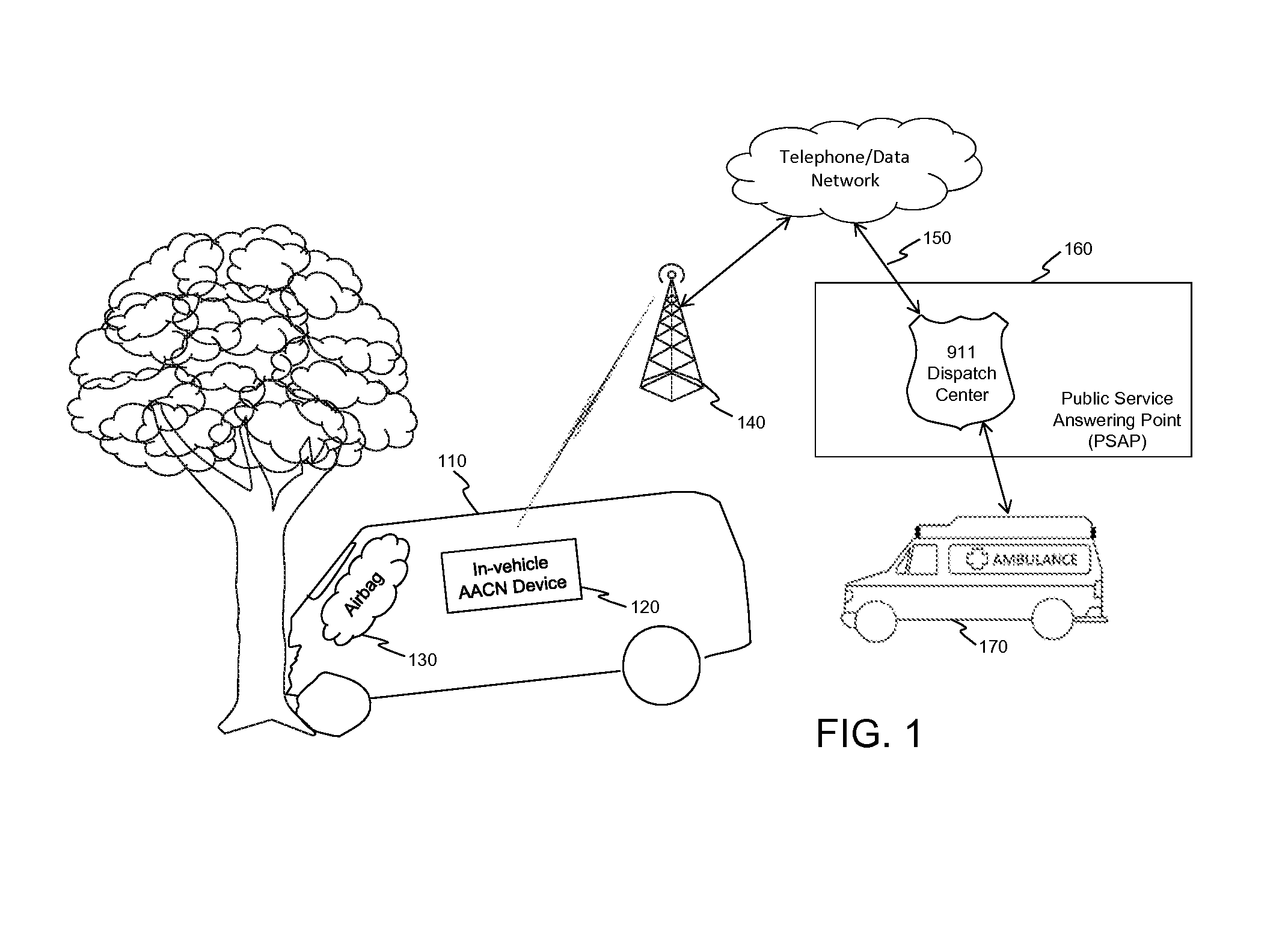Qualifying Automatic Vehicle Crash Emergency Calls to Public Safety Answering Points
- Summary
- Abstract
- Description
- Claims
- Application Information
AI Technical Summary
Benefits of technology
Problems solved by technology
Method used
Image
Examples
Embodiment Construction
[0048]The present application provides a system, method and non-transitory computer readable medium that provides in-vehicle emergency telematics solutions to automatically qualify vehicle crash events before directly placing a standard 3-digit emergency call to a local PSAP operator. The qualification is performed in two stages. The first stage produces a qualified crash detection decision wherein a preliminary crash detection based on impact sensors is qualified by non-impact sensors in addition to vehicle telemetry data that is available, for example, from the vehicles' OBDII port. The second stage uses an ISP algorithm to score the detected crash for the purpose of deciding if the crash warrants an emergency call to the PSAP operator. Although for readability this detailed description typically refers to the US “911” emergency calls, the application also applies to the EU eCall “112” emergency calls and to eCall compliant in-vehicle emergency telematics devices and systems.
[0049...
PUM
 Login to View More
Login to View More Abstract
Description
Claims
Application Information
 Login to View More
Login to View More - Generate Ideas
- Intellectual Property
- Life Sciences
- Materials
- Tech Scout
- Unparalleled Data Quality
- Higher Quality Content
- 60% Fewer Hallucinations
Browse by: Latest US Patents, China's latest patents, Technical Efficacy Thesaurus, Application Domain, Technology Topic, Popular Technical Reports.
© 2025 PatSnap. All rights reserved.Legal|Privacy policy|Modern Slavery Act Transparency Statement|Sitemap|About US| Contact US: help@patsnap.com



